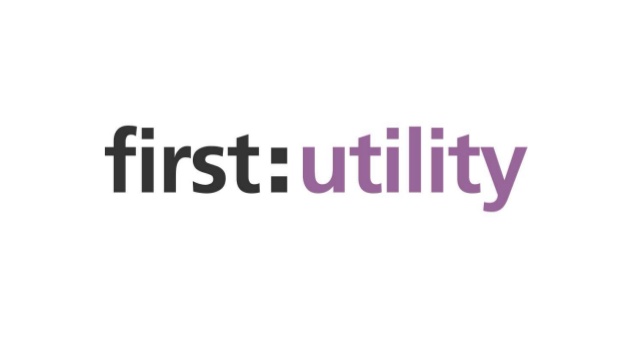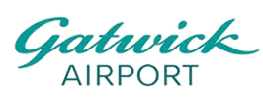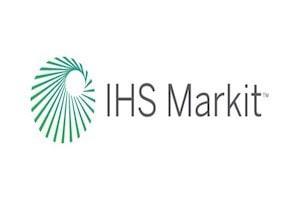You Ask, We Answer: The Critical Problems with Docker
Here at Sirius, we often get asked, "What are the problems or limitations of Docker?". This is a very good question, and one that deserves a clear, honest answer. We understand the deep-seated worry we all have about what might go wrong when choosing a core technology, as selecting a foundational platform like Docker is a decision the business will have to live with for years.
We want to be upfront: Docker has cemented its status as the industry standard for containerization, offering immense gains in development speed and portability. However, the truth is that its widespread adoption has exposed systemic weaknesses inherent in its architecture and commercial model, creating a critical risk profile for large organizations. Ignoring these challenges constitutes an "ostrich marketing strategy" that ultimately erodes trust.
This article will explain the five core domains of these deep-seated problems, ranging from architectural liabilities to commercial risks. We aim to be fiercely transparent, allowing you to understand the potential downsides and mandatory mitigation strategies necessary to deploy Docker safely in production.
1. Architectural Flaws and System-Level Security Exposure
The fundamental design of the Docker Engine, characterized by its centralized daemon and shared kernel, introduces high-severity security and stability risks that are difficult to mitigate without external tooling or architectural shifts.
The Root-Privileged Daemon Dependency (SPOF)
The Docker Daemon (dockerd), the central process managing all container lifecycles, typically executes with root privileges to control system resources. This design creates a severe security liability and a single point of failure (SPOF).
The critical issue is the trust boundary problem: If an attacker compromises the daemon or any application granted access to the Docker socket (/var/run/docker.sock), they immediately inherit the daemon’s elevated privileges. Exposing the Docker daemon socket is explicitly equivalent to granting unrestricted root access to the host system. This monolithic, root-privileged architecture is now challenged by daemonless alternatives like Podman, which operate without a central, long-running background process, often running as a non-root user.
Shared Kernel Isolation Weakness
Docker containers rely on Linux kernel features (namespaces and cgroups) for isolation, which differs fundamentally from the hardware virtualization provided by Virtual Machines (VMs). This architectural constraint means containers share the host’s kernel.
This weakness creates a false sense of isolation among development teams. If a vulnerability exists within the underlying host kernel, all running containers inherit that vulnerability. Therefore, container security is critically dependent on rigorous and timely updating of the host kernel and the Docker Engine itself to mitigate known container escape vulnerabilities.
Resource Contention and Cascading Host Crashes
By default, Docker containers operate without explicit resource constraints and can consume all memory or CPU the host kernel scheduler allows. While simple, this poses a profound operational risk.
If a container's resource consumption spikes momentarily, the Linux kernel may trigger an Out-Of-Memory Exception (OOME) and initiate the indiscriminate OOM killer process. Because the process-killing decision is global, a memory spike originating in a single container can lead to the termination of unrelated, critical host components, risking a cascading system crash. This illustrates a fundamental weakness in failure containment that necessitates mandatory resource constraints (limits on CPU and memory) for all production workloads.
2. Supply Chain Risks and Image Integrity
The process of building container images introduces multiple risks related to vulnerability inheritance, secret management, and image optimization, which collectively form significant supply chain liabilities.
Vulnerability Inheritance from Base Images
Container images act as the deployed application's foundation, and a vulnerable foundation means the application inherits that vulnerability. A pervasive mistake is using mutable image tags such as :latest. These tags represent a "moving target," meaning a build passing security checks one day might fail the next due to an unvetted upstream change in the base image, leading to non-determinism in CI/CD pipelines. To maintain stability and security posture, organizations must mandate consistent, automated scanning for CVEs and pin to specific, trusted, immutable image versions (e.g., using digests).
Secret Exposure and the Immutability Trap
Exposed secrets (passwords, API keys) are among the most common, high-risk mistakes. This often occurs when credentials are hardcoded into Dockerfiles (e.g., via ENV or ARG) or copied into an image layer.
The core issue lies in the immutability trap of layered filesystems: If a secret is introduced in an early layer, even attempting to delete it in a subsequent RUN instruction is insufficient, as the secret persists in the history of the preceding layer. This severity is underscored by the high cost of credential compromise, making mandatory multi-stage builds and the integration of external secret management vaults essential to isolate the build environment from the final runtime image.
Image Bloat Increases Cost and Attack Surface
Oversized container images, which can easily grow to 1.5 gigabytes, create "operational drag" by slowing down build processes, increasing bandwidth consumption during deployment, and dramatically enlarging the attack surface due to unnecessary libraries.
Optimization is not the default setting and requires developer discipline. The most effective path to combat bloat is the multi-stage build methodology, which separates compilation stages from the clean runtime stage, carrying forward only the essential binaries. Furthermore, modern tooling like BuildKit must be used, as the older Docker Engine builder processes all stages of a Dockerfile, even if they are irrelevant to the final target, slowing down complex builds.
3. Strategic and Commercial Risks
Adopting Docker carries non-technical risks, particularly stemming from shifts in commercial licensing policies and pressure from open-source alternatives.
Docker Desktop Licensing Compliance and OPEX
A major strategic risk is the licensing policy change for Docker Desktop implemented in 2021, which bundles the essential tools (Engine, CLI, Compose). Docker Desktop is no longer free for commercial use in larger organizations.
Paid subscriptions (Pro, Team, or Business) are mandatory for organizations that exceed either of two thresholds:
- Annual Revenue greater than $10 million.
- Employee Count greater than 250.
This structure transforms Docker Desktop into a significant, mandatory operating expense (OPEX) for growing or established companies, introducing financial risk and procurement friction, even if the tool is only used for internal development. Using the product commercially beyond these limits constitutes a violation of the Docker Subscription Service Agreement, compounding governance and legal risk. Organizations must conduct a rigorous, organization-wide audit to ensure compliance.
Vendor Lock-in and Alternative Platform Maturity
Docker is pivoting toward offering an integrated, proprietary platform (Docker Hub, Build Cloud, Scout). While convenient, deep integration into these proprietary tools exposes organizations to strategic vendor lock-in.
The core container runtime execution is commoditized, and high-security open-source alternatives, notably Podman, offer comparable command compatibility with a superior architectural model. Podman’s daemonless and rootless execution eliminates the single root-privileged daemon dependency, providing greater security assurance for multi-tenant systems. Enterprises must weigh the short-term efficiency against the long-term strategic dependence resulting from vendor lock-in.
4. Operational Gaps in Production Environments
Docker's native tooling is optimized primarily for single-host development scenarios, revealing operational immaturity when managing complex, stateful services at production scale.
Challenges with Persistent Storage and Stateful Applications
Containerization emphasizes ephemerality: file changes inside a container's writable layer are deleted when the instance is deleted. While Docker provides volumes for data survival, it lacks the comprehensive management layer necessary for enterprise-grade stateful operations.
Ensuring data integrity, guaranteed backups, configuring data encryption at rest, and replicating storage consistency across multiple hosts cannot be reliably accomplished using only native Docker volume commands. This volume management paradox means Docker is suitable only for simple, ephemeral workloads as a stand-alone solution. Organizations requiring high availability or data integrity must adopt external, complex orchestration systems, such as Kubernetes (using Persistent Volumes).
Monitoring, Logging, and Debugging Limitations
Docker provides basic telemetry (e.g., docker stats) for development diagnostics. However, this is fundamentally insufficient for production environments, which require centralized visibility, long-term historical data retention, compliance auditing, and monitoring across hundreds of distributed containers.
While Docker collects container logs, its native functionality cannot effectively search, back up, or share these logs for governance and compliance. This creates an observability debt, mandating significant investment in separate, third-party centralized logging and robust external monitoring platforms to achieve production readiness.
Networking and IP Address Management (IPAM) Conflicts
Docker’s default bridge networking relies on Network Address Translation (NAT) to route traffic. This mandated NAT layer introduces inherent overhead and latency, making the default unsuitable for low-latency or high-throughput applications. Engineers must transition to more complex network drivers (e.g., macvlan).
A frequent friction point is the non-deterministic allocation of IP ranges by Docker’s default IPAM, often allocating /16 networks in the 172.x.x.x range. This frequently clashes with existing internal enterprise networks or VPN subnets. Resolving these IPAM conflicts requires centralized administrative effort, often forcing configuration changes outside the standard application definition via the global Docker daemon configuration (e.g., modifying daemon.json).
Conclusion: Turning Weaknesses into Strengths
The purpose of discussing these Docker problems—the second of the 'Big 5' those making purchasing decision—is not to scare you away. Rather, by honestly addressing potential negatives, we want to empower you to go into this powerful technology with eyes wide open...
Every product and service has problems, and addressing them upfront is crucial, especially since smart prospective purchasers, like you, are actively searching for these weaknesses. As we've detailed, Docker’s challenges are significant, primarily requiring external orchestration (Kubernetes), robust security hardening (daemonless alternatives), and centralized governance (license compliance) to move from development utility to enterprise platform.
By understanding Docker’s critical risk profile, your organization can proactively implement the necessary security and operational mitigation strategies (such as mandatory resource limits, multi-stage builds, and centralized IPAM governance), saving time and avoiding costly mistakes.
















































